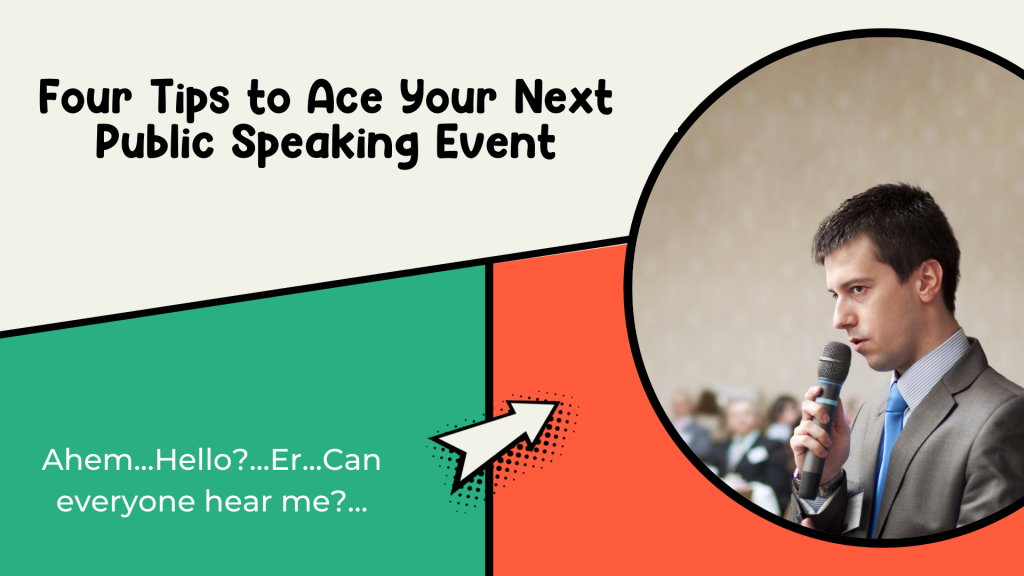(Screeching sound of microphone along with a completely uncomfortable audience)…
Despite our high school speech class’ valiant attempt, most of us don’t feel quite at home in front of an audience. We know we need to be able to “say a few words” during a meeting, while hosting a gathering, giving a toast, speaking at a funeral, pitching to a client, …and yet we often are woefully, shockingly, embarrassingly underprepared.

Here are 4 tips to begin leveraging your nonverbals and tap into your hidden stash of confidence:
1. Own your space
The way we move and stand indicates how we are perceived by others. Simply standing in a “power pose” (check out Amy Cuddy’s TED Talk for the juicy details), makes you look and feel more confident. Stand with your feet shoulder width apart, hands at your sides, shoulders down, face looking straight ahead, and nothing blocking you (DON’T EVEN THINK ABOUT STANDING BEHIND A DESK OR PODIUM—I’M ALL ABOUT YOU NOT DOING THIS WHICH IS WHY I’M TYPING IN CAPS!). Hiding behind an object or crossing your hands in front of you lowers your presence and trust with the audience and makes you look less confident. Don’t do it! And if standing with your legs shoulder width apart doesn’t feel natural, practice until it does! When I first started standing this way I felt like a macho imposter. But, with time it became my default stance and now standing with my feet close together makes me feel ridiculous.

2. Use your hands
It turns out that speaking with your hands is a superpower! Hand gestures help us understand and retain information by up to 60%, so be sure to think about how you want to add in gestures when you speak. Our brain likes it when we both see and hear things, and adding in hand gestures helps you be a better communicator. Hand gestures should feel natural, so don’t script out every spot you plan to use them but instead think about ways you can demonstrate a point using your hands and let your hands speak for themselves. A great resource to check out is the guide to “20 hand Gestures You Should Be Using and Their Meaning” by Science of People.
3. Don’t memorize
It’s tempting to think that if we commit every word to memory we’ll be golden. Wrong-O! Unless you are an actress or actor who has crafted your art for years, this will not work for you. It will sound rehearsed. It will seem forced. It will lack true emotion. Instead, organize your thoughts into “bits”.
Example:
- Set the scene—keep it short and sweet since too many details takes away from it all.
- Think about the points you want to make and try to illustrate them through stories or anecdotes. Telling a story helps add in emotion and warmth and is much more captivating than memorized lines. Simply remember your “bits” and tie them together to create the main content.
- Have a resolution to bring the content to a close.
4. Practice!
Many people believe they do better when they “wing it” which is the equivalent of delivering a first draft. Don’t do it! Professionals spend hours creating and rehearsing their presentations which bodes the question, “Why wouldn’t you?”
You are not just a speaker, you are a performer (terrifying but true!) which means to be a successful communicator, you need to tap into your nonverbals as well! Half of the challenge of giving a presentation is looking and sounding the part.
For inspiration, check out this hilarious TED Talk on “How to Look Smart” by Will Stephan.
Here’s to your next success! Just imagine me standing on a table cheering loudly for you as you give your next presentation (which I will happily do if you let me know the date and time!)

